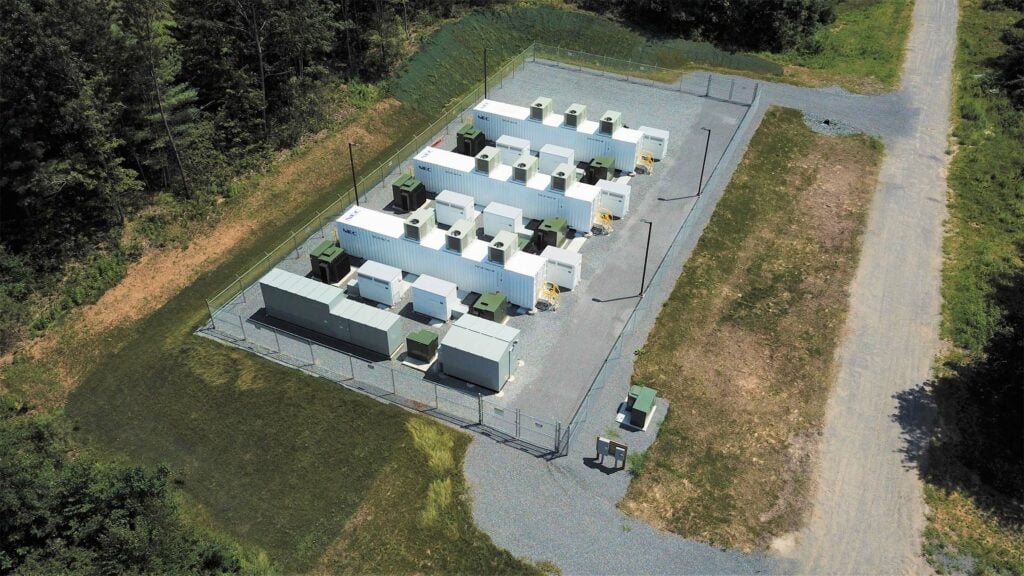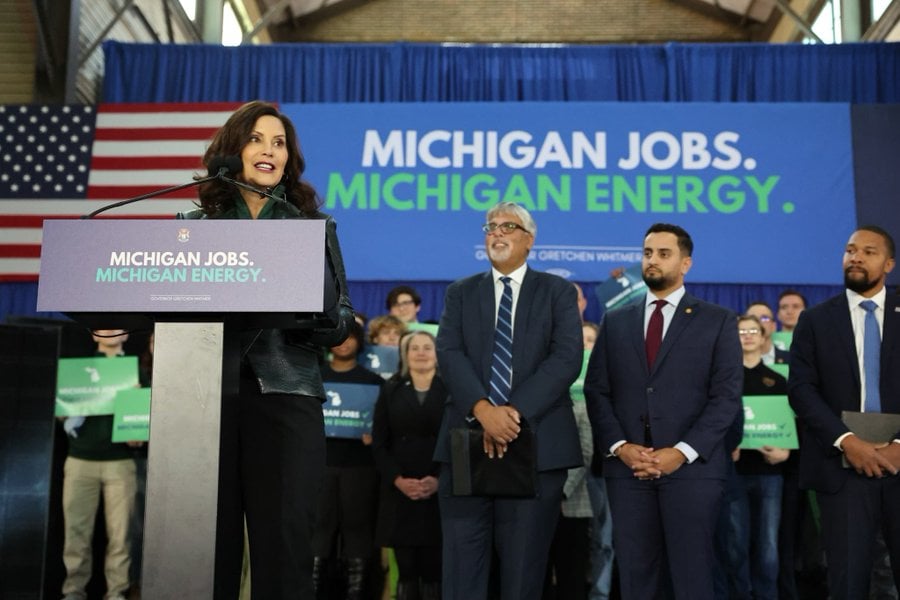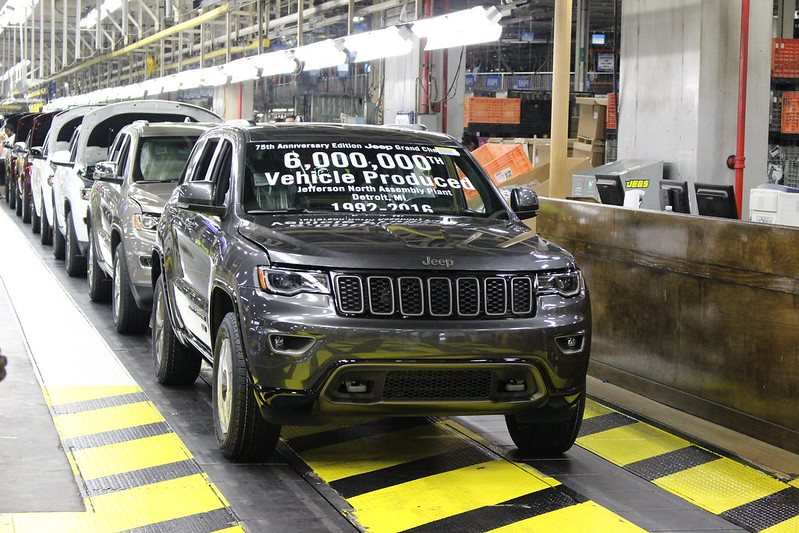
Energy-Storage.news speaks with Jeff Bishop, CEO of Key Capture Energy, about Michigan’s new energy storage target and why the Midwest could be the US’ biggest BESS market-in-waiting.
In late November, Michigan’s governor Gretchen Whitmer signed a package of clean energy legislation that made history for the US Midwest. As the first state in the region to commit to 100% clean electricity by 2040 and net zero by 2050, an energy storage target of 2,500MW by 2030 was an important component to that set of bills that are now law.
Enjoy 12 months of exclusive analysis
- Regular insight and analysis of the industry’s biggest developments
- In-depth interviews with the industry’s leading figures
- Annual digital subscription to the PV Tech Power journal
- Discounts on Solar Media’s portfolio of events, in-person and virtual
Jeff Bishop of energy storage developer-owner-operator Key Capture Energy (KCE) has long been vocal in highlighting the potential his company sees for grid-scale battery storage in the Midcontinent Independent System Operator (MISO) electricity market, of which Michigan is a part.
While the US’ energy storage market has grown rapidly in the past few years, growth has largely been concentrated in the biggest markets in California and Texas, with other states in the south-west and south making a significant contribution.
There are also regional hotspots elsewhere, like Massachusetts and perhaps soon New York on the east coast, but the Midwest and MISO – which is geographically the largest independent system operator (ISO) region in the US, covering all or part of 15 states and part of Canada, and second largest for electric demand served – has been lacking beyond a handful of innovative projects.
PJM Interconnection, the next biggest grid operator area for area and the biggest in terms of demand, covers parts of Midwestern states too, and had an early boom in the mid-2010s as an early adopter of “pay-for-performance” ancillary services markets which battery energy storage system (BESS) resources could play into, but became saturated some time ago, eroding revenues and largely detering new investment.
The bill signed by Governor Whitmer makes Michigan the tenth US state to adopt an official energy storage policy target or goal. What’s KCE’s reaction to that and what does it represent?
I think from a very high level for Michigan, it’s two things. So number one, they’re now leading the Midwest as far as clean energy adoption and so they have now signed into legislation 100% goal of emissions-free energy by 2040.
I remember way back in 2006, when I worked for a wind farm developer, and I would go to middle of nowhere in Michigan, whenever I was seeing family up there and scout out places for potential wind farms. That Michigan, has gone from 0% clean energy to what’s now going to be 100% in just 25 years, it’s just really transformative.
And so I’m excited for that. I’ve been wanting to do a project in the state for 20 years. Anything that gives me an excuse to go see family! It’s transformative in that way, for the state.
And then, we’re going to be seeing legislation like this all throughout the Midwest, and Michigan is just going to be the start.
The establishment of the target – as well as the rest of the clean energy policy package – has been a while in the making. Was that process something you were able to get some visibility on, and perhaps have some input as well?
[At] our company, ever since I co-founded it back in 2016, we focus on the markets that are going to be the major ones in three to five years.

And so it’s not surprising, in 2020, when we started our first energy storage development project within the state, at the same point, we started getting engaged in stakeholder processes as well because, we saw something here.
Today we have 700MW of projects in various stages of development within Michigan, and are really excited to be able to compete to provide battery storage as part of this 2,500MW goal by 2030.
Obviously, MISO overall, just needs more capacity. Looking at all the coal plant retirements, even the natural gas plant retirements that are in Integrated Resource Plans [published regularly by utilities], and they just need more capacity. That’s where storage can really shine.
We do have a lot of other developments throughout MISO, the region needs it. Whether that’s Illinois, whether that’s Minnesota, whether that’s Indiana, the region is going to be needing standalone battery storage projects. We definitely ramped up our development activities three years ago, all throughout the entire ISO and plan on continuing.
Presumably the target was set at 2,500MW by 2030 based on various criteria, and ultimately, these targets are far from being the only way energy storage gets deployed in the US. How though, does that target level align with your view of the need for storage, as a developer active in Michigan?
Back when I was 20, I worked on my first wind farm on the development side. For more than two decades since, anytime that we saw Renewable Portfolio Standards come out, it was always a huge stakeholder process. The environmental groups really helped lead the way to creating great industries.
All the targets would start relatively small, and then the states quickly realised both how cost-effective they were, how much economic development came from them, and how entire industries can be created. Then pretty much every single Renewable Portfolio Standard in the States has gotten significantly bigger.
I assume the same will happen with energy storage, where we’ll start with today what will look big, but tomorrow will look relatively small and get bigger from there.
Again, just looking at what the state and what MISO needs; as they get to more weather-dependent sources of energy, are going to be needing the backup capacity.
Whether it’s our projects or somebody else’s projects, they need the energy storage, and I’m going to be very intrigued to see how this market emerges.
Is there a typical kind of profile of an energy storage project that you’re thinking about in Michigan, or that you might expect to result from this target?
Right now, in general the MISO market incentivises 4-hour duration. I expect that’s going to be what most parties target, but as more energy storage is deployed, and as the longer duration storage that’s out there, that’s really really cool, bleeding edge stuff, I expect the overall market will shift.
I think four hours is probably the initial sweet spot and then after that, it may go to some longer duration projects as well.
For KCE, we started in Texas with 1-hour to 2-hour batteries and now at this point are only doing to 2-hour+ batteries within the state. Things will continue to evolve, but at least for now, it looks like 4-hour will most likely be the sweet spot.
As to how the target will ultimately lead to deployments: do you think it’s something that’s been determined yet? Or is going to now be figured out a little bit in terms of which we sort of markets energy storage plays, in what sort of ancillary services opportunities might be there, and so on?
It’s going to be really interesting to see how the implementation of this policy is going to be going over the next few years. Right now, Michigan is the de facto leader for battery storage in the entire Midwest and is leading as far as what other states will likely do, and it will continue to be a stakeholder process.
Like in every market, I never quite know how they’re going to evolve, I just know directionally where the market is going to go. Directionally, they need capacity.
Coal is 30% right now of Michigan’s generation and natural gas is 30%. Battery storage is going to be coming in and replacing a lot of fossil fuels and I assume they’re going to be needing the 4-hour batteries right now, but during the stakeholder process, a lot of people way smarter than me will be involved and ultimately help determine what the market is going to look like.
As well as replacing retiring capacity, we see energy storage being deployed to manage growing demand for electricity in the face of electrification, not just of transport but also buildings and industry. Those of us outside the US perhaps know of Michigan as a traditional home of manufacturing. Is there a sense that this target can help harness clean energy as a stimulus to the regional economy?
I grew up in Pennsylvania, but my entire mom’s side of the family is in Michigan. So I get to go a few times every year. Overall, Michigan, as part of the Midwest, they know how to build stuff.

At KCE, we were acquired by SK two years ago now and our parent company, they have a fair amount of manufacturing within Michigan, and it just comes down to: the state knows how to build stuff.
So anytime a target like this comes about, you expect industry to follow. Anytime there are price signals that make you known that a market is going to exist in the future, as a developer, you put money in and you start to develop and then as the manufacturer, you look to see where the market is going, and where makes the most sense, from a supply chain perspective. Michigan is incredibly well positioned at this point. It’s just cool!
Overall, Midwest and MISO is where I think batteries are going to be most needed over the next five years out of anywhere in the country. Just to start to see the signals happening now, from an industry perspective, that’s really exciting.
What do you think the impact of this legislation will be onto other states, within MISO, the broader Midwest, and the rest of the US?
Illinois, last year, they put out a potential goal that didn’t pass through, but it would have been for 7,500MW of energy storage. That could
But, once Michigan proves that this is good for ratepayers, it’s good for reliability, it’s good for economic development, other states follow. This is going to be the first of what I expect to be many. MISO needs it.
Energy-Storage.news’ publisher Solar Media will host the 5th Energy Storage Summit USA, 19-20 March 2024 in Austin, Texas. Featuring a packed programme of panels, presentations and fireside chats from industry leaders focusing on accelerating the market for energy storage across the country. For more information, go to the website.

